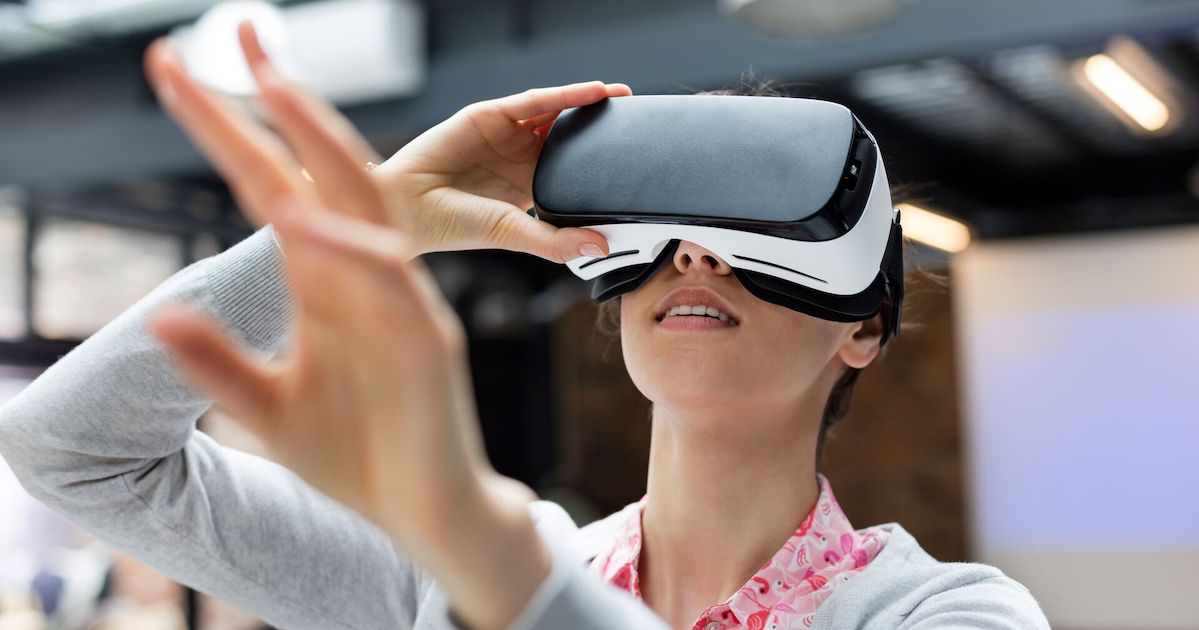Virtual reality helps people with hoarding disorder practice decluttering
SOURCE: HTTPS://WWW.SCIENCEDAILY.COM/
OCT 16, 2023
Study: VR therapeutic reduces pain intensity long term, compared with sham app
SOURCE: MOBIHEALTHNEWS.COM
MAY 27, 2022

A virtual reality therapeutic program reduces pain intensity up to six months later, compared with a sham app, according to a study published in JMIR.
The study was sponsored by AppliedVR and used its RelieVRx system, formerly known as EaseVRx, to assess its long-term effectiveness for people with chronic lower-back pain (CLBP). It followed up on earlier research that analyzed the immersive eight-week program, compared with a 2D sham experience immediately after treatment.
Researchers sent surveys to 188 participants before the treatment, after treatment and then, after one, two, three and six months. They found the mean percentage change of pain intensity six months after the treatment was -31.3% in the VR group, compared with -15.9% in the sham group. More than half the VR group met the threshold for moderate clinical meaningfulness, while 25% of the sham group met that level.
Meanwhile, 38% of the RelieVRx cohort achieved substantial clinical meaningfulness, while only 13.2% of the sham group did.
The study also found the VR intervention improved pain-related interference with activity, stress and sleep. Though differences between the two groups for physical function and sleep disturbance were statistically significant, they weren't clinically meaningful.
"Combined, the results support the 6-month analgesic efficacy of a fully automated, 8-week, home-based VR program for CLBP," the study's authors wrote.
"Recent meta-analyses of VR noted a lack of high-quality efficacy studies for chronic pain, except for those involving physical rehabilitation programs. To our knowledge, our investigations on the extended efficacy of VR are the first involving home-based pain management without physical rehabilitation."
WHY IT MATTERS
The researchers noted some limitations with the study, including low levels of depressive symptoms among participants and reliance on self-reported outcomes. Though the study was double-blind, most participants guessed to which group they belonged, which suggests the blinding may not have worked.
The sample also included mostly white female participants with some college education, so it may not be applicable to individuals from other backgrounds. However, researchers did examine whether socioeconomic status (SES) affected participants' engagement.
"While our examination of the impact of SES on user engagement is preliminary and may be subject to selection bias, we found equivalent engagement between lower and higher SES individuals with EaseVRx. These data potentially refute a perception that a high-tech digital treatment, such as VR, may be infeasible in lower SES individuals and suggest that digital therapeutics, like EaseVRx, represent an opportunity to reach CLBP patients in historically underserved areas," the wrote.
THE LARGER TREND
AppliedVR received FDA De Novo clearance in November to market its VR system to treat CLBP. The company announced $36 million in Series B funding in November, after raising $29 million Series A earlier in 2021.
Other companies are focusing on using virtual reality to manage chronic pain. In July, XRHealth launched a program that aims to address pain management. Japanese medical device maker Jolly Good late last year announced it planned to study using VR for chronic pain. It also offers VR courses for medical training.
LATEST NEWS
Augmented Reality
Hi-tech smart glasses connecting rural and remote aged care residents to clinicians
NOV 20, 2023
WHAT'S TRENDING


Data Science
5 Imaginative Data Science Projects That Can Make Your Portfolio Stand Out
OCT 05, 2022

SOURCE: HTTPS://WWW.SCIENCEDAILY.COM/
OCT 16, 2023
SOURCE: HTTPS://WWW.SCIENCEDAILY.COM/
OCT 16, 2023
SOURCE: HTTPS://WWW.MOBIHEALTHNEWS.COM/
AUG 28, 2023
SOURCE: HTTPS://WWW.SCIENCEDAILY.COM/
AUG 07, 2023
SOURCE: HTTPS://WWW.SCIENCEDAILY.COM/
JUL 14, 2023
SOURCE: HTTPS://WWW.SCIENCEDAILY.COM/
JUL 13, 2023
SOURCE: HTTPS://WWW.ANALYTICSINSIGHT.NET/
JUN 21, 2023